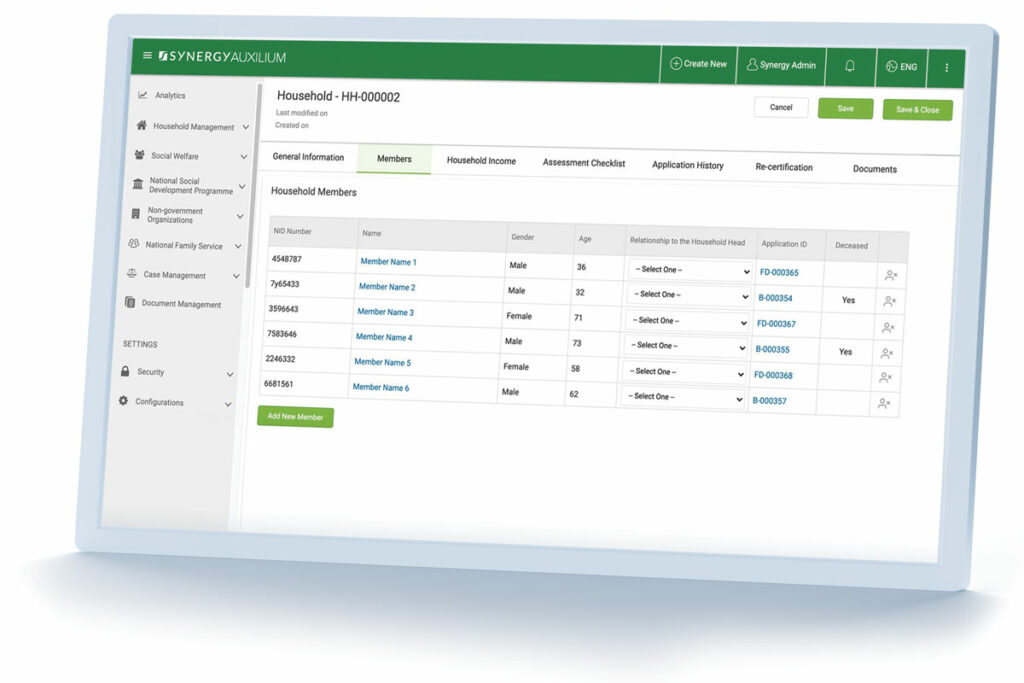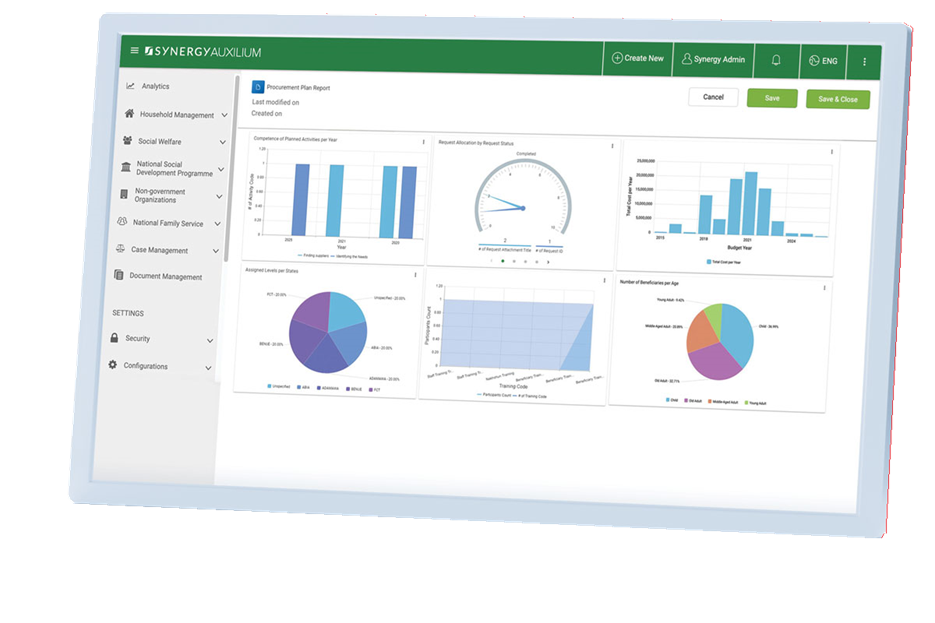Identifying and Register Households and Individuals Eligible for Social Protection Programs
Identify Potential Beneficiaries
Reach out to Potential Beneficiaries
Gather and Register Information
Assess Needs and Conditions
Outreach to Potential Beneficiaries
The Unified Social Registry allows to reach out to potential beneficiaries who may be eligible for social safety programs and services but have not yet been enrolled. This procedure entails creating knowledge about available programs and services and encouraging eligible individuals and households to register. Outreach is an important component of the social registry since it helps ensure that all eligible persons and families are registered and have access to social protection programs and services.

Intake & Registration
Synergy Auxilium’s Unified Social Registry enables gathering information from potential beneficiaries and registering them in social protection programs and services. The intake and registration process often includes demographic and socioeconomic data collection, such as household size, income, assets, and education levels. Intake and registration are critical components of the social register because they ensure that all eligible individuals and families are enrolled in social protection programs and services and get the benefits to which they are entitled.
Needs & Conditions Assessment
This assessment often includes gathering information on health, education, and living conditions, as well as identifying specific vulnerabilities that may necessitate to the point interventions. Needs and conditions assessment assists policymakers in designing programs that address the individual needs of beneficiaries and guarantee that social protection services are tailored to their needs. It is an important component of the social registry because it helps guarantee that social protection programs and services are effective in meeting the needs of the most disadvantaged individuals and households.
